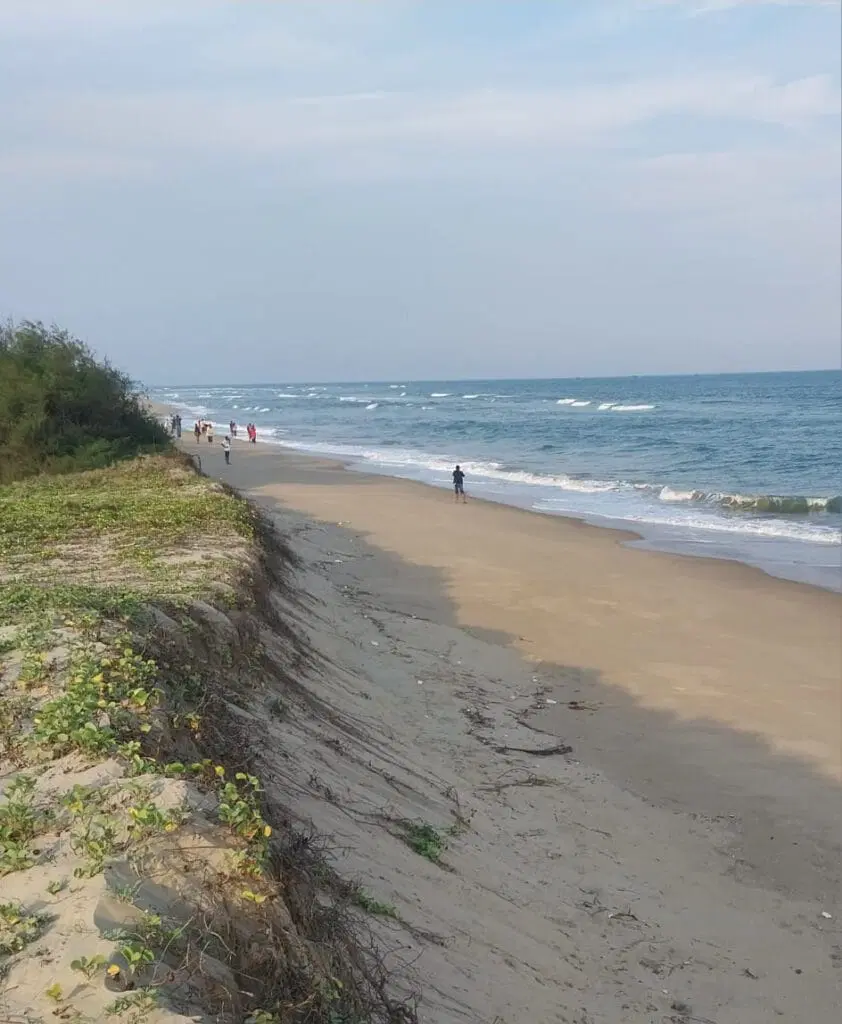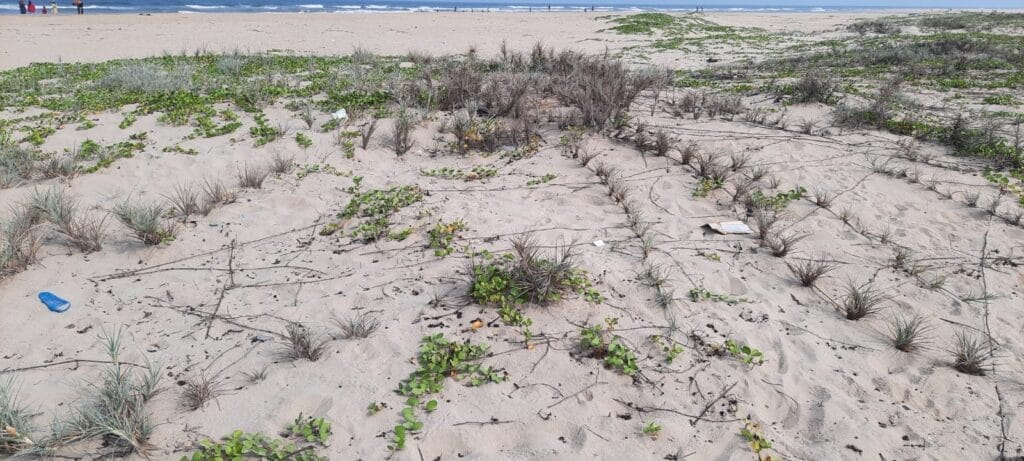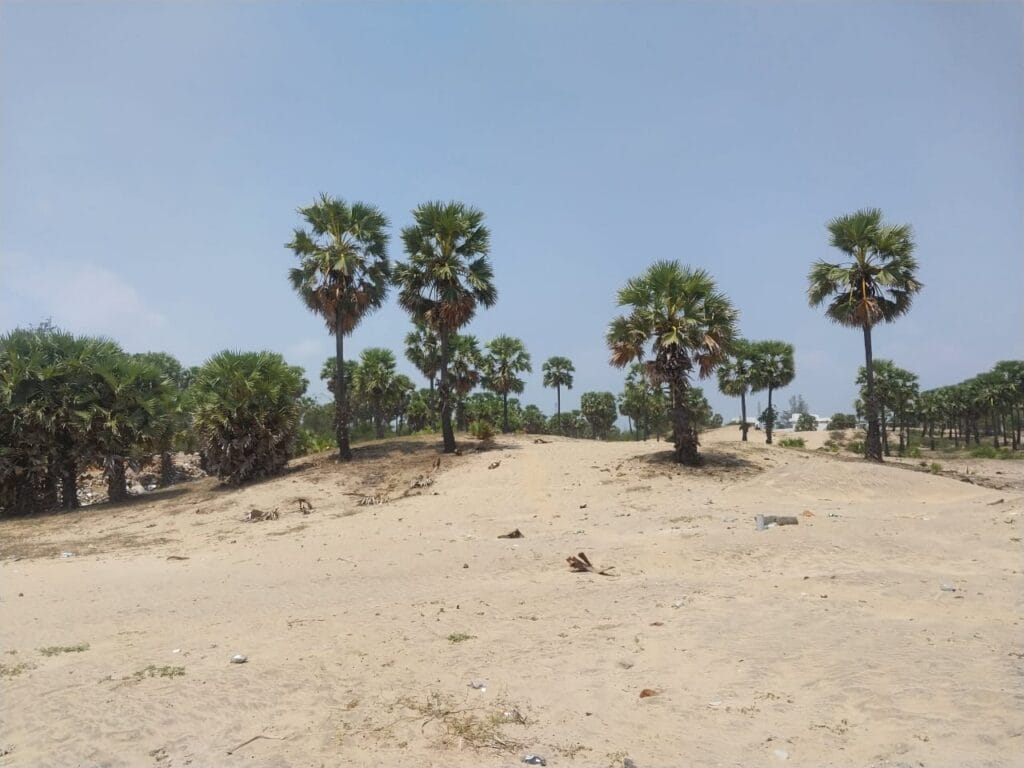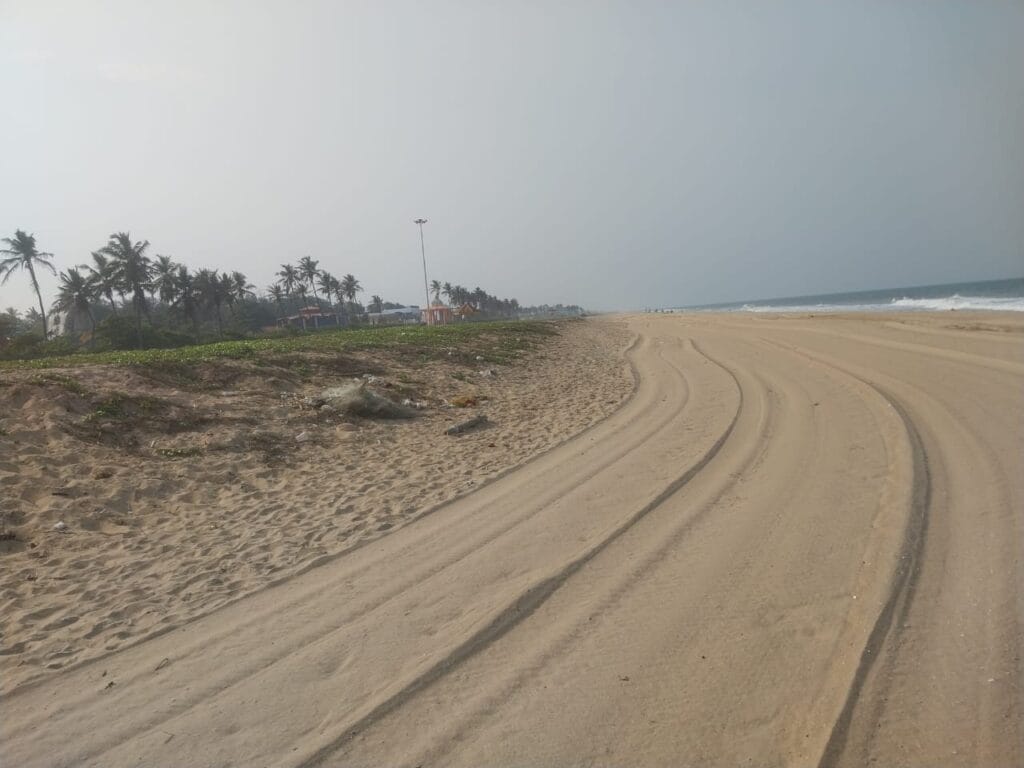As one travels along the sandy stretch from Neelangarai to Uthandi parallel to the East Coast Road in the Chennai suburbs, beaches and fishing villages seem more expansive compared to their urban counterparts. They are less crowded, and as you proceed further down the stretch, the prevalence of commercial activities diminishes.
Sand dunes, or large curved mounds formed by loose sand, appear. As you move away from the city, they get so big that you might not be able to see the adjoining villages that exist right behind them.
Dunes existed in the city centre, till as far back as the late 80s, but they have since been flattened to make way for promenades, commercial buildings and people-centric beaches. While dunes might look like just large mounds of sand, they contribute to and sustain coastal ecosystems, as well as a rich groundwater table, wherever they are present.
Unfortunately, the dunes of Injambakkam along the city’s shoreline, are currently under threat from a new project to develop Chennai’s beaches and turn them into entertainment and leisure zones. Known as the ‘Chennai Shoreline Renourishment and Revitalisation Project,’ it is being carried out by a Special Purpose Vehicle (SPV) of the Chennai Metropolitan Development Authority (CMDA), the city’s land regulation and zoning body.
Read more: What to expect from beach beautification plans for Chennai
So, what dangers does the project pose for these dunes? Before that, let us understand the formation of these dunes.
Sand dunes and their role in the water table

Sandy beaches are buffers; they are aquifers, acting as natural barriers to large waves moving towards land. The dunes are curved on one side, so, they don’t directly break the waves in their path. Instead, they passively reduce the intensity of large waves. In contrast, the man-made rocks that are often used to reduce wave intensity, break them rather violently, causing high impact on land. Dunes, however, absorb the force of these waves.
Sand dunes increase the surface area of the ground, so, the absorption area of the beach also increases. Since dunes are tall, they have a high carrying capacity. They act as sponges, absorbing high amounts of rainwater, besides preventing salt intrusion into groundwater.
Thus, the groundwater table in these areas is quite high, both in quality and quantity. Dunes also provide protection for nesting turtles and hatchlings by keeping them out of sight from dogs and other predators.
How dunes are formed

Three important flora facilitate the forming of these dunes and prevent them from shifting. The first are sand arrestors, acting as the root of the dunes. Ipomoea and Spinifex are two kinds of sand arrestors. The Ipomoea is essentially a creeper that can withstand high saline. Since cattle find them unpalatable, they don’t graze these creepers.
As a result, Ipomoea flourish in coastal areas. They trap sand that passes through them and hence are known as sand arrestors. By trapping sand, they usually get buried. However, these creepers penetrate through the sand layers. Slowly, layer by layer, sand settles around these creepers, forming dunes. It takes around 100 years or more to form a sizeable dune. Beneath the dunes, there are layers and layers of these creepers, which eventually die, but the ones above ground flourish.
These creepers have purple funnel-like flowers that attract bees and other insects, thus supporting coastal pollination. Another creeper, the Cowpea also acts similarly.
The Spinifex, known locally as Ravanan meesai because it looks like a moustache, performs a similar function. It is a type of grass that runs across the beach. The leaves are modified into tough spiny structures preventing transpiration. They trap sand and stabilise the dunes.
Stabilising the terrain

The second kind of flora is the shift arrestors, which prevent the dunes from shifting from one place to another due to strong winds, given that they are made up of loose sand.
The Palmyra trees or Pana maram, are dune stabilisers or dune shift arrestors. They act as windbreakers and reduce the intensity of the winds coming in, preventing big shifts. Additionally, when trees are situated near sandy areas, they contribute to the accumulation of sand on the dunes, thereby enhancing their height. This process is crucial for stabilising the terrain of coastal ecosystems.
In Cheyyur, undisturbed dunes are so big that one may not be able to see the villages that exist right behind them. The many Palmyra trees in this area prevent shifting of dunes and help in enhancing their height. The dunes almost look like mountains. Their heights might range between 12 and 32 metres. One can see this at Mudiliar Kuppam.
CMDA’s shoreline beautification project

The Chennai Metropolitan Development Authority (CMDA) is targeting three key coastal areas: Thiruvottiyur, Kasimedu, and Injambakkam to Akkarai stretch as per the beautification plan. It aims to connect all three beaches and divide them into specific zones. These zones might be for recreational, containing pedestrian footpaths, toilets, landscaping and parking facilities, aligning with the stringent criteria for Blue Flag accreditation.
When work had started for the beautification, one of the dunes in Injambakkam was being destroyed via landfilling. In response to this, a representative of the fisher community filed a petition with the National Green Tribunal (NGT), which took suo moto cognizance and put a halt to the work.
The NGT also stated that the project can only continue after evaluation by the State Coastal Zone Management Authority. While the authority could potentially block the project, it is unclear how they would respond. The Coastal Regulation Zone over the years has been diluted to accommodate more buildings and development on the coastline; while previously no construction could take place within 1000 metres from the high tide mark, it has been reduced to 100 metres and there are plans to reduce it further.
To create cycle tracks, pavements, and more, the government would require concretising the Coastal stretch and for firm base rubble to be spread over the sandy beach destroying the permeability of the sandy beaches.
What could be the adverse effects?
Ultimately, flattening dunes could potentially weaken the beaches’ defence against tsunamis and reduce the carrying capacity of the natural aquifers in these areas.
Read more: Why fisherfolk in Chennai are opposed to beach beautification projects
In most human-centric beaches, a vehicle which moves across the length of the beach to sieve the sand is employed to clear the beach litter and remove creepers, preventing dune formation for good. Once these beaches are flattened, sand dunes won’t be able to form over time.
The project could potentially damage water bodies that are scattered along the Akkarai-Uthandi coastline as well. In fact, over the years many ponds and lakes along the coast have already been landfilled to create corporation parks and walking tracks.
The beautification of these beaches will also affect fishermen, who will not have space to keep their nets and boats along the shoreline as they usually do. Moreover, the potential light pollution that comes with the commercialisation of beaches could hurt the physiology of marine animals, which largely depends on their cycles of light and photoperiods.
Where are Chennai’s dunes now?
In many parts of the city, dunes were a part of the beaches. Even in Besant Nagar (Elliot’s Beach), the remnants of a dune can be seen right opposite Schmidt’s Memorial. A few years ago, the authorities wanted to demolish the same to create a jogging track and promenade. The dune was partially filled with gravel. However, owing to public resistance, they had stopped it.
As you move along ECR, the road moves up and down, as it is built on the sand dunes. While one might not associate Chennai with dunes, they do exist, some right beneath the roads and promenades we walk on. It is important to prevent them from disappearing completely from the landscape in the name of beautification and real estate development projects that have been eyeing beaches for some time now.
It is disheartening to observe our dunes levelled, whereas the European countries do all there possible to maintain the ecosystem of the shore.
CMDA should do more to restore cleanliness of the much frequented beaches awfully littered
Chennai Metropolitan Destruction Authority will be recorded in history as the main reason for Chennai aka Madras to go under the sea in a decade from now. They violate, misuse, disregard, overrule their own rules and guidelines.